Chmod Octal Command In Linux

Linux Cheat Sheet

Changing Linux Files Directory Permissions Dba Genesis Support
Playing With Linux And Sql Chmod Command Usage And Example

Linux File Permissions Tutorial For Beginners

How To Display File Permissions In Octal Format In Linux Kompjuteras

Command Line Understanding Chmod Symbolic Notation And Use Of Octal Ask Ubuntu
How to use Check the desired boxes or directly enter a valid numeric value (e.g.

Chmod octal command in linux. Chmod (change mode) is one of the most frequently used commands in unix or linux operating system. Chmod never changes the permissions of symbolic links;. The chmod command stands for change mode… and it’s used to limit access to resources….
Chmod never changes the permissions of symbolic links;. 1) Change permissions using Numeric (octal) method. Select the permissions you require below.
Only the root user or a regular user with sudo privileges can change file or directory permissions. Assuming 444 (r–r–r–) permissions on the test.txt file, we change it to 755 (rwx-r-x-r-x). If you ever need to say it out loud, just pronounce it exactly as it looks:.
Verbose Changes Silent Default. To see what permissions have been set on a file or directory, we can use ls. Use the octal CHMOD Command:.
So, the equivalent would be to do a chmod a+rwx filename, then chmod g+s filename.The chmod info page does explain this in more detail. Umask is a 3 digit octal number. $ chmod OPTIONS MODE filename Only the root user or a regular user with sudo privileges can change file or directory permissions.
# chmod 755 test.txt # ls -l test.txt-rwxr-xr-x 1 root root Jun 17 12:01 test2.txt Changing permissions on a directory. Chmod has two operating modes:. The command is usually used together with a set of octal notations or alphabetical characters to change file permissions.
This is not a problem since the permissions of symbolic links are never used. To view these online, enter. You can change file permissions in this format:.
The command can accept one or more files and/or directories separated by space as arguments. Chmod command in Linux What is chmod?. # chmod 755 file You can change permissions for all files and directories within a directory.
If you need to list a file's permissions, use the ls command. With the concepts mentioned in this article, you are equipped with sufficient knowledge to handle permissions in Linux-based distros. It also allows to change the file permission recursively to configure multiple files and sub-directories using a single command.
The output of this command will look something like this:. The second way to represent the same permissions is by using octal numbers. The chmod command can set permissions in both octal (e.g., 755, 644, etc.) and symbolic (e.g., u+rwx, g-rwx, o=rw) formatting.
To setup file permission 761 you need to use chmod command as follows:. Chmod Linux Command – chmod ใช้ในการเปลี่ยนสิทธิ์ในการอ่าน, เขียน และ execute file หรือ folder แบ่งเป็นสิทธิ์ของ file owner, group owner, other user ซึ่งคำสั่งจะถูกแปลงจากเลขฐาน 8 ในการระบุ. This document describes the GNU / Linux version of chmod.
If you need to change a file permission, use the chmod command. In this tutorial, you will learn how to use chmod recursively and change file permission on Linux. A numeric mode is from one to four octal digits (0-7), derived by adding up the bits with values 4, 2, and 1.
Chmod -R a+rwx,u-x,g-wx,o-wx folder_name. The basic syntax is:. You can download pdf version of linux-command-line book from sourceforge-project.
The chmod command in Linux is used to change file and directory permissions using either text (symbolic) or numeric (octal) notation. Chmod - Unix, Linux Command - chmod - To change access permissions, change mode. Syntax to change the permission in Octal Notation:.
Chmod is a Linux command that will let you "set permissions" (aka, assign who can read/write/execute) on a file. Chmod Octal Permission for file File/Directory Name e.g – a) If we want to change the permission as per diagram 2.1 we need to execute below command $ chmod 777 filename.txt $ ls -l filename.txt-rwxrwxrwx 1 chandan chandan 0 Jun 5 21:48 filename.txt. Chmod +rwx file_name chmod 777 file_name And.
The request is filtered by the umask. Where OCTAL-MODE is the octal form of the permissions. Permission levels and types.
Chmod -R 644 folder_name. Man chmod man ls A variable called `umask' is used as a permission mask for all newly created files and directories. The chmod command, like other commands, can be executed from the command line or through a script file.
This tutorial explains chmod command symbolic notation (r, w, x, a) and octal notation (0, 1, 2, 4) in detail with chmod command arguments and options. Only the object owner, superuser or root account can change the permissions of a file/folder. Using Chmod Command to Change File Permissions As all Linux users, you will at some point need to modify the permission settings of a file/directory.
The Linux command chmod allows you to control exactly who is able to read, edit, or run your files. 40 Best Examples of Find Command in Linux. The chmod (change mode) command controls file permissions for the owner, group, and all other users who are neither the owner nor part of the group associated with the file.
For more information, including octal specification of permissions, refer to the Unix User's Manual pages for chmod(1) and ls(1). In this 2-minute Linux tip, we’re going to look at the chmod command – the command for. However, for each symbolic link listed on the command line, chmod changes the permis- sions of the pointed-to file.
The tool will provide you with an octal code that corresponds to these permissions which can then be applied to relevant directories and files with chmod. The chmod system call cannot change their permissions. Octal 2 means to set group ID on the file.
Rwxrwxrwx ) to see its value in other formats. To use chmod, you need to know about access modes.Each file on a Linux system has nine access modes (or settings) that determine exactly who can. The first octal digit sets the setuid, setgid and sticky bits (see this article for more details on setuid/setgid).
Chmod is an abbreviation for change mode;. In this tutorial, we will discuss how to change file permissions in Linux using chmod command. The chmod system call cannot change their permissions.
You can use chmod in the command line to change file or directory permissions on unix or unix-like systems such as linux or BSD. Chmod is a Linux command that will let you "set permissions" (aka, assign who can read/write/execute) on a file. Chmod Permissions for chmod 644.
As you can see from below output current chmod version is 8.22. # chmod 644 file To setup a file readable/executable by everyone and writable by the owner only:. It takes the following syntax:.
This manual page documents the GNU version of chmod. Using Numeric Modes With Chmod. It is also used to change special mode flags.
The chmod command can be used with octals (as. In Unix and Unix-like operating systems, chmod is the command and system call which is used to change the access permissions of file system objects (files and directories). How to check chmod command version.
In Unix-like operating systems, the chmod command sets the permissions of files or directories. 777 ) or symbolic notation (e.g. You can pass more than one file or directory.
Please note that chmod 777 filename is the equivalent of chmod 0777 filename in this example. It takes the following syntax:. Setuid Setgid Sticky Bit.
For example, to set the permissions of filename to -rw-r--r--you could run the command:. Extra chmod command options. The chmod command is used to change the file or directory access permissions.
This Linux chmod command tutorial shows you to change file permissions including mode, octal and binary of files and directories with examples and syntax. Learn how chmod command is used to manage Linux permission levels (user, group and other) and types (read, write and execute) step by step with practical examples. It’s a same as using your mouse to right-click a file or folder and selecting the permission tabs and.
Chmod (Ch ange Mod e) is a command line utility in Unix, Linux and other Unix like systems to change the read, write, execute permissions of a file for owner, group and others. In my previous blog post I discussed how Linux file permissions work, and now I am going to discuss how to change permissions using chmod. To know about the access permissions of a file or directory, use the ls -l command as shown below:.
If you want to check chmod command version then you need to use chmod --version command as shown below. In this article, you will learn how to change permissions of any file or directory with chmod command. The chmod command in Linux is used to change file and directory permissions using either text (symbolic) or numeric (octal) notation.
The first digit selects the set user ID (4) and set group ID (2) and sticky (1) attributes. The chmod command allows you to change the permissions on a file using either a symbolic or numeric mode or a reference file. Chmod OCTAL-MODE FILE… – Here we use the base command without any options.
Chmod command is used to change permissions of a given file according to a certain mode which might be a set of octal characters or a set of alphabetical characters. It’s usually used when installing and configuring various services and features in a Linux system. Hi, this is Sandra Henry-Stocker, author of the “Unix as a Second Language” blog on NetworkWorld.
Conclusion # You successfully learned how to use chmod command to set or change the file and directories permissions using either the symbolic or numeric mode. Chmod changes the file mode bits of each given file according to mode, which can be either a symbolic representation of changes to make, or an octal number representing the bit pattern for the new mode bits. Chmod Calculator is a free utility to calculate the numeric (octal) or symbolic value for a set of file or folder permissions in Linux servers.
The chmod command is used to define or change permissioins or modes on files and limit access to only those who are allowed access… It changes the mode of each FILE to MODE…. # chmod 0761 file To setup a file readable by anyone and writable by the owner only:. You use the chmod command to set each of these permissions.
We have already described the Linux file permissions. $ ls -l sample.sh -rwx-rw-r-- 1 matt deploy 94 Oct 4 03:12 sample.sh. To set the permissions of a file or directory using numeric modes, simply use the format:.
The command that executes such tasks is the chmod command. $ chmod OPTIONS MODE filename. This command is used for changing the mode of access.
Chmod changes the file mode bits of each given file according to mode, which can be either a symbolic representation of changes to make, or an octal number representing the bit pattern for the new mode bits. Chmod changes the file mode bits of each given file according to mode, which can be either a symbolic representation of changes to make, or an octal number representing the bit pattern for the new mode bits. It can further.
When we use the chmod command later on, you’ll see that you can change the permissions using either symbols or octal numbers. The command chmod changes the file mode bits of each given file according to mode, which can be either a symbolic representation of changes to make, or an octal number representing the bit pattern for the new mode bits. How does chmod work?.
Chmod 775 file_name chmod ug+rwx,o=rx file_name Hope this helps new users to understand and get knowledge about Symbolic Notation & using Octal number for chmod. We will explain the modes in more detail later in this article. Chmod is the command used to change the permissions of an object, and is short for “CHange MODe”.
Unix/Linux chmod command examples to Change File Permissions. Because unix was written a long time ago (in computer years, at least), people who used it were fairly geeky and thought nothing of slinging binary, octal and hex around. Chmod stands for change mode.
Permissions (access modes) can be changed with the chmod command by using some operators (-, + or =) to assign permissions (r, w or x) to a specific user (u, g, o or a). Chmod is a great Linux command for manipulating file and directory permissions. How to use chmod?.
For a directory, the permissions govern who can cd into the directory and who can create, or modify files within the directory. The Linux command to change permissions on a file or directory is chmod, which we like to read as change file mode. FactorPad Linux Essentials playlist.
The name is an abbreviation of change mode. The chmod command changes the access permissions of files and folders. Chmod command is used in two ways :.
Linux chmod command is used to change access permissions of files and directories. Any omitted digits are assumed to be leading zeros. To change permission using the Linux chmod command we have to follow some syntax and rules.
That’s why a unix admins will say stuff like mode 755 and the bits magically. So that’s how permissions are displayed in Linux using symbols. Chmod means ‘change mode’ and it changes file or directory mode bits (the way a file can be accessed).
How to use chmod?. Linux chmod command is one of the most commonly used commands especially by system administrators when assigning modifying file and folder permissions.

Linux File Permissions Tutorial How To View And Change Permission

How To Use Chmod Command In Linux Explained With Examples

File Security

Unix File Permissions Computer Science

Bif703 File Permissions As You Recall From Our Previous Notes That Unix Linux Recognizes Everything As A File Regular Files To Store Data Programs Ppt Download

Understanding File Permissions 2buntu

Command Line Understanding Chmod Symbolic Notation And Use Of Octal Ask Ubuntu

Solved File Permissions In Linux Can Be Set Using A 3 Dig Chegg Com

Understanding Linux Permissions And Chmod Usage
Why Does Doing Chmod 777 Not Make A File Executable But Chmod 755 Does Isn T 777 Greater Than 755 Quora

Ppt Agenda Powerpoint Presentation Free Download Id

Linux Chmod Calculator Chmodcalculator

Solved B To Remove Myfile Ordinary File From The Paren Chegg Com
Q Tbn 3aand9gcq6mtqrr2tbkvj8mt7j61itbsugnnfl3ltc9cdgqfgdswx0kkor Usqp Cau
Linux Chmod Tips

Is There A Web Based Converter Between Rwx And The Octal Version Unix Linux Stack Exchange

Umask Wikipedia

File Permissions How To Use Chmod Command Youtube

How To Use Chmod Command In Linux Explained With Examples

Basic Linux Commands Ubuntu

How To Use The Chmod Command 2 Minute Linux Tips Network World
Github Fed Command Line Cheatsheet Unix Command Line Cheatsheet
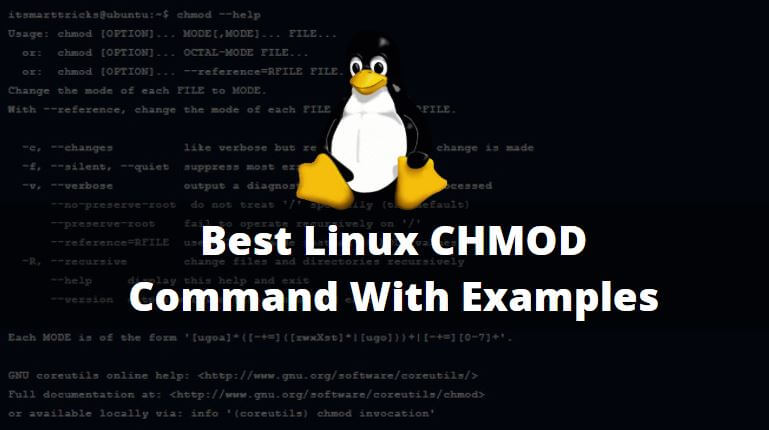
Best Linux Chmod Command With Examples It Smart Tricks

Whatever You Knew About Chmod Is Wrong Alien Coders

Linux And Unix Chmod Command Knowledge Hub

Pin By Dr Stefan Gruenwald On Cheatsheets Computer Science Programming Learn Javascript Linux Operating System

Linux Commands Cheat Sheet By Linoxide Com

Linux Chmod Command Linuxfordevices

Workbook 4 File Ownerships And Permissions Ppt Video Online Download

Linux Chmod Command Linuxfordevices

Linux Chmod Example Linux Hint

Modify File Permissions With Chmod Linode

Permissions In Linux Geeksforgeeks

Chmod Wikipedia

Explain Absolute And Relative Permission Using Chmod Linuxteach

Linux File Permissions Tutorial How To View And Change Permission

How To Use Chmod Command In Linux Explained With Examples

Unix Command Line Basics 4 Permissions Lennoxfiles
1

How To Display File Permissions In Octal Format In Linux Kompjuteras

Linux File Permission Javatpoint

Understanding Linux Permissions And Chmod Usage

How To Display File Permissions In Octal Format In Linux Kompjuteras

Added By Galpeartech Instagram Post Update And Refresh Your Linux Knowledge Follow Galpeartech Chmod Is One Of The Most Important Command Which You Can Use To Change The Permission In Linux System

14 Permission And Modification Times

Chmod Command In Linux With Examples Geeksforgeeks
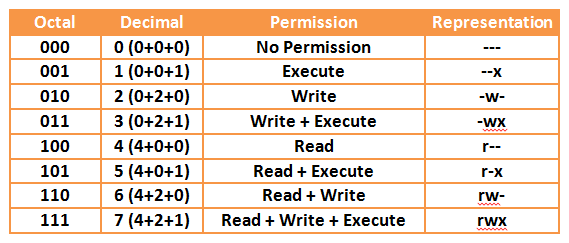
Your Own Linux Chmod Basics Of Files Directories Permissions And Use Of Chmod

Advance File Permissions In Linux Geeksforgeeks
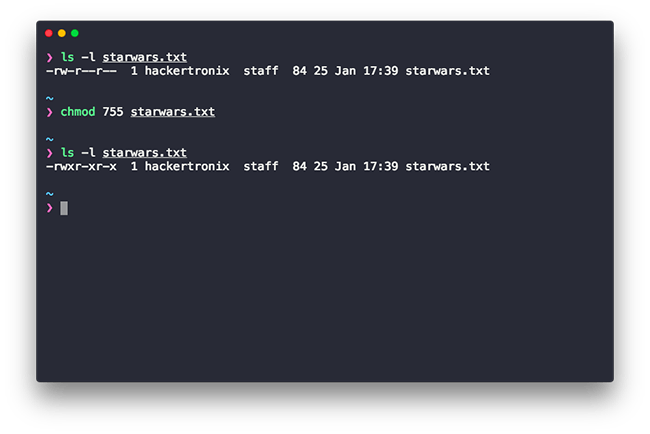
Linux Commands For The Intermediate Users Techlila
Q Tbn 3aand9gcq1nsq3kxri7ryrifobs2rfobawbv4hezfw9 Ldf4feblahyn09 Usqp Cau

Chmod 755 Command What Does It Do Codefather

Cloudaffaire Com Wp Content Uploads 06 25

Solved If The Octal Value Of The Permissions On A File Is Chegg Com

Permissions In Linux Geeksforgeeks

How To Use Chmod And Chown Command In Linux

Understanding Linux Permissions And Chmod Usage

Use Of Chmod Command In Linux Devopsdex
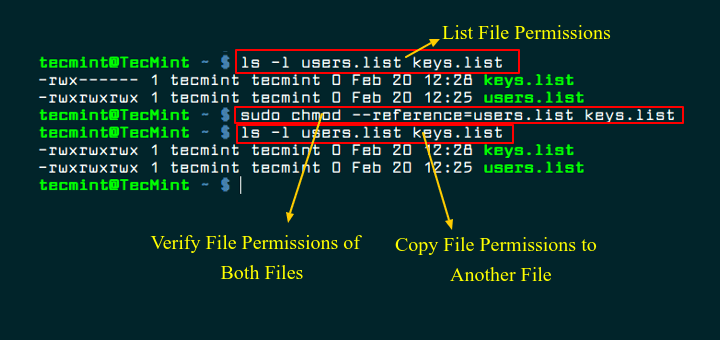
How To Copy File Permissions And Ownership To Another File In Linux

Explained How To Use Chmod Command Complete Guide Youtube

Command Line Understanding Chmod Symbolic Notation And Use Of Octal Ask Ubuntu

Linux Command Line Tutorial 18 Octal 777 Chmod Youtube

How To Get Octal File Permissions On Linux Unix Command Line Nixcraft

Linux Chmod Command Help And Examples

Chmod Chown Wsl Improvements Windows Command Line

Linux Command Line Cheat Sheet Kalitut

Everything About Chmod Command In Linux Hackerearth

Linux Command Line Tutorial For Beginners 19 Octal And Numerical Permissions Chmod Youtube

Chmod 777 In Terminal The Command To Make All Changes Affect Every File And Folder Ask Ubuntu

How To Use The Chmod Command On Ubuntu 16 04 18 04 With Examples Website For Students

How To Use Chmod Command In Linux Explained With Examples

Linux Permissions Pluralsight

New Bash Linux Cheat Sheet Wallpaper Download Free 40 X 3050px

Translate Rwx Permissions Into Octal Format In Linux

Unix Permissions

Chmod Recursive Change Permissions Recursively On Files Folders

Linux File Permissions And Chmod Doug Vitale Tech Blog

Use Of Chmod Command In Linux Devopsdex

9 Quick Chmod Command Examples In Linux Summary Networks

Chmod 755 Command What Does It Do By Claudio Sabato Medium

How To Use Chmod Command In Linux Explained With Examples
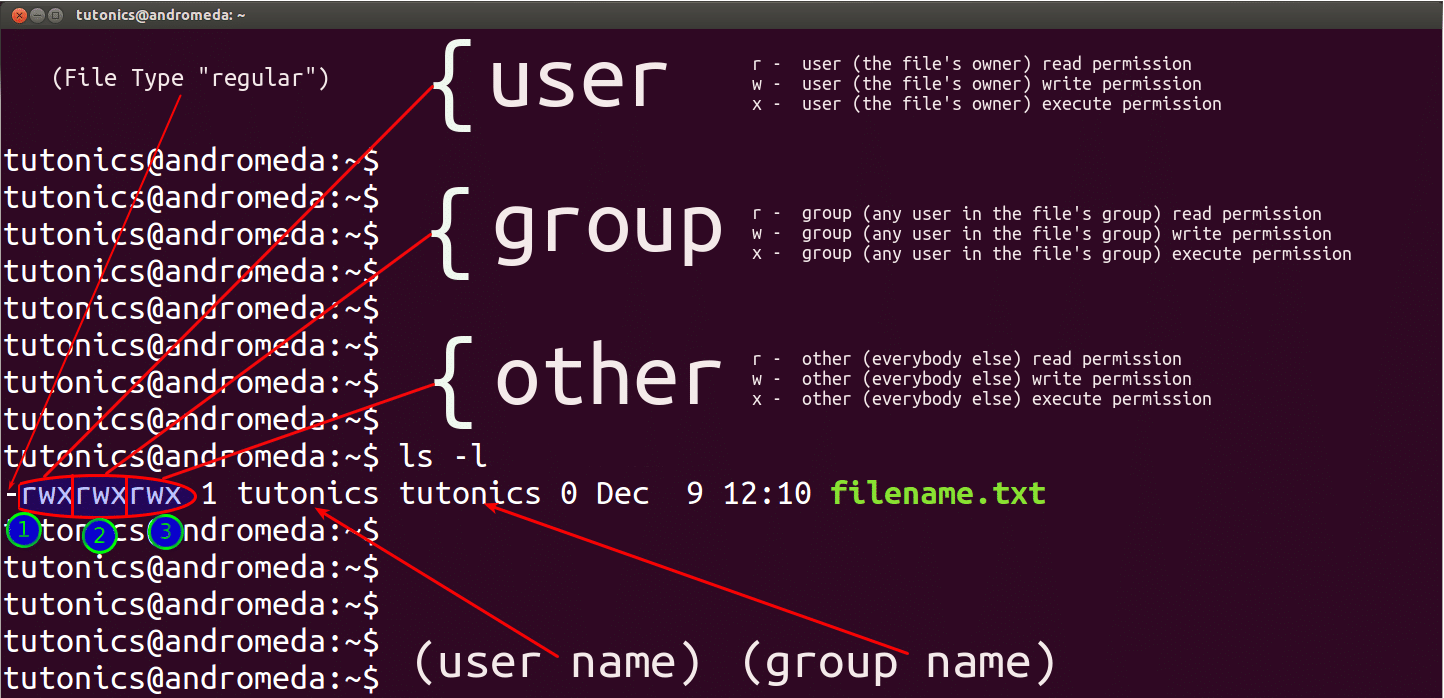
Linux File Permissions Tutorial For Beginners

What Are User And Group Permissions 荷树栋 博客园

Common Bash Commands

Linux Users And Groups Linode

How To Get Octal File Permissions From Command Line In Mac Os Osxdaily

How To Use Chmod Command In Linux Explained With Examples

Linux Chmod Command Clearly Explained Codedodle

An Introduction To Linux File Permissions Boolean World

Bif703 File Permissions Ppt Download
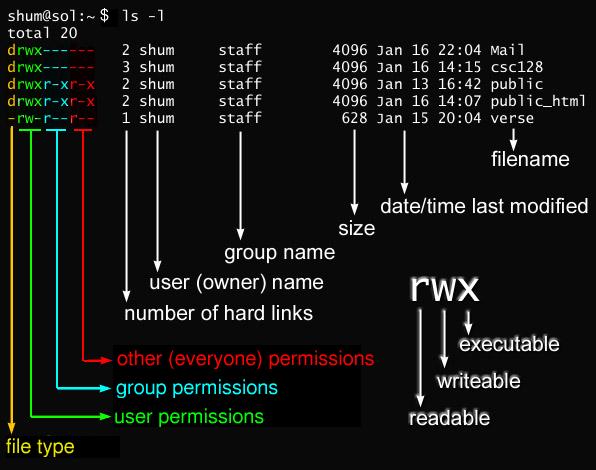
Javarevisited 10 Example Of Chmod Command In Unix Linux

Ppt Csci 330 The Unix System Powerpoint Presentation Free Download Id

Ppt Workbook 4 File Ownerships And Permissions Powerpoint Presentation Id

Chmod Calculator Chmod Generator Chmod Command

Chmod Remove Write Access

Workbook 4 File Ownerships And Permissions Ppt Video Online Download

Learning The Shell Lesson 9 Permissions

How To Use The Chmod Command On Linux
Q Tbn 3aand9gcs J72hjomdluhqe6xjivy M6yrjmkqx9x3z3ps Rpnb8by3w7z Usqp Cau



